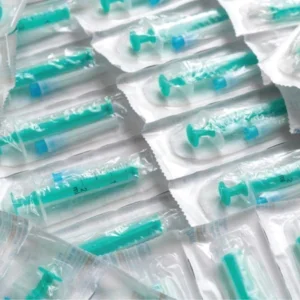With worldwide serialisation deadlines looming, pharmaceutical companies must invest in systems and technology that will enable every product to be tracked and traced throughout the supply chain. Operators that exceed requirements by regarding serialisation holistically stand to benefit from the business opportunities brought by more stringent regulations.
A counterfeiting boom has made serialisation a global priority. The global trade in fake pharmaceuticals is worth $200 billion every year, with internet sales accounting for $75 billion of that; the World Health Organization (WHO) estimates that up to 50% of drugs are bogus in some countries.
Wrong idea
Crucially, a ‘counterfeit’ treatment isn’t necessarily the wrong substance. It could also be an incorrect dose, or come in the wrong packaging, or lack the requisite license for it to be sold in a particular country. As FDA discovered in an operation in 2003, nearly nine tenths of the drugs imported into the US by mail or courier were counterfeit in some way.
“They could have been the wrong dose, the wrong version, the wrong packaging or the wrong language, but all of those things are indicators that something is amiss in the supply chain,” says Mike Wallace, who works with pharmaceutical and medical device companies dealing with global supply chain issues, and was formerly director of global standards and serialisation at Abbott Laboratories.
“Counterfeiting can lead to poor patient outcomes, reduced patient safety and lost profit margins, as well as the damage to the brand equity and company that owns it.”
Because of this, countries all over the world have started serialising. In the US, the phased implementation of the Drug Quality and Security Act (DQSA) has begun and will require manufacturers (November 2017), and repackagers and wholesalers (November 2018) to place unique identifiers on their medical products.
In the European Union (EU), the Falsified Medicines Directive (FMD) will mandate two mandatory safety features that will allow medicines to be verified and authenticated (a unique identifier and an anti-tampering device) by February 2019.
Universal requirement
Elsewhere, Turkey introduced a serialisation programme in 2010 to reduce instances of pharmaceutical reimbursement fraud. Since then, all pharmacists under the scheme have been officially unable to gain reimbursement for medicines not carrying the 2D data matrix barcode. Other countries that are serialising include India, Argentina, Brazil, China and South Korea.
“It’s not a question of ‘if’, it’s a question of ‘when’,” Wallace stresses. “There is clearly going to be a requirement to do this, and not just for pharmaceuticals. At some point in the future, this will be required for all medical products.”
A holistic approach
Companies that will stand out from the competition are those that opt to treat the incoming serialisation legislation as an opportunity not only to gain more detailed information about their businesses, but also to communicate more effectively with their customers. “If you plan smartly and agree that you’re going to look at this from a holistic standpoint, you’ll realise there are ways to take advantage of the situation,” Wallace says.
Broadly, there are five pieces of information that regulators will want to see every time a product is scanned: the serial number, the unique product identifier (in most cases this is a Global Trade Item Number (GTIN) or barcode number), the expiration date, and the lot or batch code.
“If you have all of that information, along with the time, date and location of each scan, you have the opportunity to build a ‘pedigree’ or ‘chain of custody’ of where the product has been and who’s touched it,” explains Wallace. “It gives you an opportunity to look at your supply chain and start to get more granular information than you might have had prior to this.
“Previously, you would have been looking at a container load of products, as opposed to each individual package, but [with serialisation], you have a much higher level of digital information that can be analysed in much greater detail to identify potential gaps in your supply chain where, for example, the velocity slows down, or products are disappearing.”
Scan-do attitude
Wallace likens it to the difference between a high-definition television and an older model. “It’s another layer of information that gives us things that we didn’t understand we wanted or needed, but now that we have it, we won’t want to go back to the old way,” he says. “Smart businesspeople will appreciate this.”
Yet for Wallace, using data to improve supply chain efficiency is simply good business practice. The real opportunity comes from the new potential links between the patient and the manufacturer. “As the product is serialised, customers could scan the package with their smartphone and be immediately connected, for example, to a manufacturer’s website,” he explains.
“Let’s say you’re a patient or caregiver: you could scan the package and find out the answers to questions including: ‘are there any contraindications?’ and ‘how do I properly administer this product?’.”
Appy relationship
Companies could even create apps that customers could download to remind them when to take their medication. “You’re creating this opportunity for the company that owns the product to have a one-on-one relationship with patients or caregivers that doesn’t really exist today. Plus, this will lead to improved compliance, which leads to increased sales. It’s a win-win-win.”
Overcoming challenges
Moving from the equivalent of tracking the volume of water in a pipe to tracking each H2O molecule will, of course, bring challenges, not least the costs associated with serialising.
“In many cases you will have to retrofit lines that have been operating for years in confined facilities.” Wallace notes. “Not only does this involve modifying existing lines, and adding or building new machines to mark products properly, you may also need to expand your footprint. That’s not cheap.”
Pharmaceutical firms should also expect teething problems while getting used to different regulators’ and trading partners’ systems. When it first went online, data synchronisation issues with Turkey’s serialisation system led a brief delay in sales.
“At some point, the data got out of sync with the products and products were shipped but the data wasn’t in the government’s system yet, so the distributor couldn’t receive the products legally,” Wallace says. “In most cases now, data about your product has to precede the product and be in the hands of the next trading partner or regulatory body before they can legally accept or process that particular product.”
Same game, different rules
Of course, regulations differ between countries, too, and herein lies one of the biggest challenges associated with serialisation. “While the rules are similar in nature everywhere, they’re not all the same,” Wallace affirms, “and most pharmaceutical companies have several suppliers and contract manufacturers with plants located in various countries that may also supply multiple locations.
“Companies have to be prepared to manufacture those products in different ways for different countries to meet the varying regulatory needs, and they have to be able to track that.”
Global outlook
Moreover, many operators will switch contract manufacturers as a matter of routine, adding another level of complexity. “You have to maintain the serialisation information you have for as many as ten years beyond a product’s expiration date, and when you switch contract manufacturers, you may have to relocate that information and register it in a different location, as it has to be accessible and readable for a regulatory body, or customer, who needs information about that product,” Wallace explains.
For these reasons, addressing serialisation from a strategic standpoint, rather than looking at each country individually is the way forward, according to Wallace: “If I just solve my problem locally, I end up with a bunch of different solutions; I don’t have a larger view of what’s going on, and have no way to understand what my real supply chain economics are.
“But if you look at it from a more strategic standpoint, it gives you the opportunity to see product flows, to analyse your supply chain to make sure you understand where your costs are and how you might improve them. It also gives you the opportunity to switch suppliers or contract manufacturers if there are supply or quality issues.”
What’s next?
Looking ahead, Wallace predicts that all pharmaceutical products are going to be serialised in the next decade, bringing new challenges and opportunities. While the latter will lie mainly with customers’ abilities to get all the information they need about products on their smartphones, one of the key challenges will be how to manage the huge amount of data that will soon be digitally attached to every drug package.
“I believe there will be a large movement to standardise all of the information available, from research and development product data to packaging and design data, to approvals, to marketing images and information shared with customers on contraindications,” Wallace predicts.
“Managing this data will be a big challenge. As the direct B2C (business-to-consumer) links are developed, I think there will probably end up being third-party companies that act as go-betweens for companies and patients or caregivers in order to maintain privacy.”
Unlimited possibilities
If these challenges can be overcome, though, the possibilities are incredibly exciting. “With a supercomputer in your hand, there are unlimited opportunities for communication,” Wallace concludes.
“The smartphone is already an indispensable tool in hospitals and caregiving situations, and it will continue to grow in importance, creating this window of opportunity, which, in my view, is the pot of gold at the end of the rainbow.”





